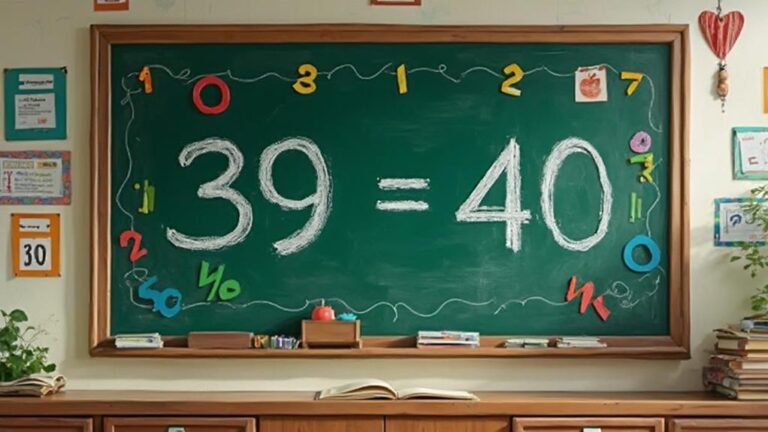Did you know that almost 90% of English words follow regular spelling patterns? This means that by understanding these patterns, you can greatly improve your spelling accuracy. You might wonder how to start mastering these patterns and what techniques could support your learning journey. From breaking words into components to using personalized mnemonics, there are several strategies available. Let's explore how these methods, combined with daily practice and visual aids, can transform your spelling skills and boost your confidence in writing.
Techniques for Learning and Memorization
When it comes to mastering spelling, breaking down unfamiliar words into manageable parts can be a game-changer. By dissecting words into prefixes, root words, and suffixes, you can identify common patterns and reduce spelling mistakes. Recognizing these elements not only aids in spelling but also deepens your understanding of word meanings.
To further enhance your practice spelling routine, mnemonics are invaluable. Creating memorable phrases or acronyms helps cement the correct spellings of challenging words in your memory. For instance, the phrase "Big Elephants Can Always Understand Small Elephants" can help you remember the spelling of "because."
Engaging with the meanings of words and integrating them into sentences also fortifies your spelling skills. This contextual approach guarantees that you're not just memorizing in isolation, but embedding words within a meaningful framework.
Visual aids are another powerful tool. Using sticky notes or flashcards for repetitive exposure to difficult words can greatly improve retention. Consistent review with these visual prompts helps engrain the correct spellings in your mind.
Visual and Repetitive Learning Strategies
To effectively master spelling, leverage visual memory techniques by linking difficult words to familiar images, aiding in quicker recall.
Implement repetitive writing practice to strengthen muscle memory for correct spellings, and use sticky notes and flashcards for constant visual reinforcement and active engagement.
These strategies, combined with interactive spelling games, provide a thorough approach to improving spelling proficiency.
Visual Memory Techniques
You can greatly enhance your spelling retention by employing visual memory techniques that leverage vivid mental imagery and repetitive learning strategies. Start by using color-coded materials to highlight challenging segments of words. This method allows you to visually differentiate between easy and hard parts, reinforcing your memory of the entire word.
Create flashcards with the word on one side and a corresponding image or mnemonic on the other. This approach facilitates repetitive learning and strengthens visual associations. For example, if you struggle with the word "necessary," you could draw a necktie to remember that it has two "c"s but only one "s."
Another technique involves rhythmic tracing of letters while visualizing their shapes. This not only aids visual memory but also solidifies spelling in both auditory and kinesthetic memory.
Additionally, place sticky notes with difficult words around your living space. These frequent visual reminders will help with memorization and recall.
Repetitive Writing Practice
Repetitive writing practice effectively reinforces correct spelling through muscle memory, making it easier to recall challenging words. By writing out difficult words multiple times, you can solidify their correct spellings in your long-term memory. This method leverages the power of muscle memory, allowing you to spell words correctly with greater ease.
Engaging in rhythmic tracing of letters while vocalizing them can enhance both auditory and kinesthetic memory retention. This dual approach guarantees that you aren't only seeing and writing the words but also hearing them, creating a multi-sensory learning experience.
For even more precision, utilize color-coded materials to highlight difficult parts of words during your repetitive writing practice. This visual aid can help you focus on challenging segments and reinforce correct spelling.
Regularly incorporating spelling words into sentences during writing practice helps contextualize their use and reinforces understanding. This contextualization is vital as it mimics real-world usage, making it easier to recall correct spellings when writing.
Flashcards and Sticky Notes
Leveraging visual and repetitive learning strategies like flashcards and sticky notes can considerably enhance your spelling proficiency. Flashcards offer an effective tool for repetitive learning, allowing you to review challenging words and their spellings quickly and portably. This facilitates on-the-go study sessions, making it easy to integrate learning into your daily routine. By customizing flashcards with mnemonics or images, you create engaging and memorable visual associations that aid memory retention.
Sticky notes, on the other hand, serve as excellent visual reminders. By labeling common objects around your home with their corresponding spellings, you reinforce word recognition and create constant opportunities for daily practice. This method guarantees that you're exposed to correct spellings throughout your day, helping to reduce spelling errors over time.
Incorporating both flashcards and sticky notes into your study routine engages multiple senses—visual, auditory, and kinesthetic—thereby enhancing memory retention through writing, reading, and repetition. Regularly updating sticky notes with new vocabulary or difficult words keeps your learning process fresh and relevant.
Daily Practice and Study Methods
Consistent daily practice is the cornerstone of mastering spelling skills. Committing to just 10-15 minutes of spelling exercises each day can greatly enhance your retention and recall of challenging words.
Focus on incremental learning by tackling one to four words at a time. This approach prevents cramming and allows for a deeper understanding of both the spelling and meaning of each word.
Incorporate the look, cover, write, check method into your routine. First, look at the word, cover it, write it from memory, and then check your accuracy. This technique reinforces learning through repetition and is particularly effective for younger learners.
Set specific goals for your spelling practice. Aim to master a certain number of words each week. This helps you track your progress and maintain motivation.
Additionally, engage in regular review of previously learned words before introducing new ones. This practice boosts your confidence and reinforces memory, aiding in long-term retention.
Improving Overall Spelling Ability
Although sometimes overlooked, studying etymology can greatly improve your overall spelling ability. By understanding the origins of words, you gain insights into spelling patterns and meanings, enhancing retention.
Explore the history of English spelling to decipher why certain words are spelled in seemingly irregular ways. This knowledge makes it easier to remember correct spellings of commonly misspelled words.
Engage in regular reading to expose yourself to diverse vocabulary and correct spellings in context. This immersion helps reinforce your overall spelling abilities.
Reading a variety of genres guarantees you encounter different word usages, further solidifying your spelling skills.
Consistent practice through writing exercises and flashcards is essential. Writing regularly and using flashcards to drill challenging words can greatly improve your recall.
Create a personal dictionary of frequently misspelled words to target specific weaknesses and track your progress over time.
Utilize spelling tools like spell checkers and educational apps. These tools provide immediate feedback, allowing you to correct mistakes on the spot and learn from them.
Community Insights and Expert Tips
To enhance your spelling skills, start by personalizing mnemonic techniques, as these tailored strategies can considerably improve your recall.
Incorporating humor into your learning process can also strengthen memory retention, making challenging words easier to remember.
Experiment with different mnemonic methods and seek feedback from your community to identify what resonates best with your learning style.
Personalize Mnemonic Techniques
Personalizing mnemonic techniques can drastically improve your ability to remember challenging spellings by tailoring them to your interests and preferences. By creating unique mnemonics, you personalize the learning process, enhancing memory retention. For example, if you love music, you might craft rhythmic phrases to master spelling conventions. This approach taps into your existing knowledge and makes learning more engaging.
Community feedback plays an essential role in refining these techniques. Sharing your personalized mnemonics with peers can provide fresh insights and additional strategies. For instance, a peer might suggest a visual mnemonic that you hadn't considered, adding another layer to your learning toolkit. Engaging with others fosters a sense of belonging and collective growth.
Experimenting with various formats, like visual mnemonics or acronyms, allows you to discover what works best for your learning style.
Regularly revising and updating your mnemonics guarantees they remain relevant as you encounter new words. This continuous adaptation helps maintain their effectiveness, making the learning process dynamic and responsive.
Use Humor Effectively
Why not make spelling practice more fun and effective by incorporating humor? Humor can transform the often tedious task of memorizing spelling rules into an engaging and enjoyable experience. By creating funny mnemonics, such as "Big Elephants Can't Always Use Small Exits" for "because," you solidify your understanding of tricky words. These humorous associations make it easier to recall correct spellings during writing.
Using humor can also alleviate the stress associated with learning new words and making mistakes. A positive attitude towards spelling challenges fosters a more relaxed and open mindset, essential for effective learning. Sharing humorous anecdotes about your own spelling errors with peers can create a supportive learning environment. This collaboration not only builds camaraderie but also reinforces the spelling rules as you laugh and learn together.
Studies show that laughter releases dopamine, enhancing memory and learning. By integrating humor into your spelling practice, you're leveraging this natural boost to retention. Hence, humor isn't just a distraction; it's a strategic tool that makes spelling practice more effective and enjoyable.
Embrace humor, and you'll find yourself mastering spelling rules with ease and a smile.
Spelling Rules Overview
Maneuvering the labyrinth of English spelling requires an understanding of key spelling rules that serve as guiding principles. These rules guide the correct formation of words, helping you navigate the complexities influenced by multiple languages. When adding suffixes to words, pay attention to how the final letter might change. For instance, "happy" becomes "happiness." This is a significant step toward achieving correct spelling.
One of the most known spelling rules is "i before e except after c." This rule helps many learners spell words like "believe" correctly but be aware of exceptions to this rule, such as "weird."
Pluralization generally involves adding "s" or "es." For words ending in "s," "x," "z," "ch," or "sh," add "es" to form plural versions, like "box" to "boxes."
Understanding troublesome suffixes like -able vs. -ible or -ent vs. -ant is essential. "Dependable" uses -able, while "digestible" uses -ible. Such distinctions are critical for spelling accuracy in the English language.
Frequently Asked Questions
How Can I Learn Spelling Easily?
Imagine you're struggling with "conscientious." Break it down into parts, use mnemonic devices, and play spelling games. Explore word origins and phonetic techniques, and use visual aids like flashcards. Gradual practice guarantees improvement and confidence.
How Do You Identify Spelling?
You identify spelling by developing phonetic awareness, using visual recognition, and leveraging context clues. Root analysis and etymology exploration provide deeper insights. This methodical approach fosters a sense of belonging within a community of precise spellers.
How to Remember How to Spell?
To remember how to spell, use mnemonic devices and visual aids. Understand phonetic spelling and word origins. Engage in regular practice exercises. These methods help create connections, making spelling easier and fostering a sense of community.
What to Do if You Don't Know How Do You Spell a Word?
If you don't know how to spell a word, employ spelling strategies. Use phonetic spelling or context clues to identify patterns. Address common misspellings with visual aids or mnemonic devices, and verify with online resources.







